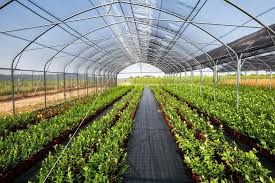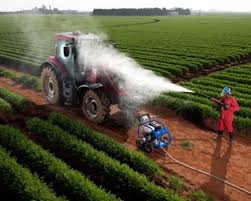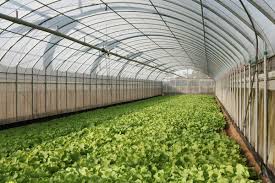Transportation systems are important in moving fresh produce from production areas to distribution points. Transportation facilitates the rapid movement of fresh produce within the horticultural supply chain.
Fresh produce must be properly protected during transportation to minimize mechanical damage, temperature abuse, taint, and contamination by foodborne pathogens.
It is the responsibility of the transport provider to ensure that the transport vehicle is well maintained and is in a hygienic condition. The quality of perishable products can be adversely affected by a lack of standard hygiene in transportation.
Read Also: Bedbugs: Description, Damages Caused, Control and Preventive Measures
Key Factors That May Compromise Quality During Transportation of Fresh Produce

1. Mechanical Damage in Transit
Mechanical damage of fresh produce results in tissue darkening or colour changes on the skin of the commodity and markedly affects its nutritional and sensory quality, i.e. its taste, texture, appearance, and flavour.
Mechanical damage can also lead to moisture loss, pathogen invasion, and can stimulate the production of ethylene, which triggers the senescence process in horticultural crops such as apples, papayas, and tomatoes. The types of mechanical damage that occur during transportation are:
i. Impact damage: Impact damage occurs due to collision between produce items or between produce and hard surfaces; rapid acceleration or deceleration (e.g. when fruits are dropped) or exertion or removal of forces (such as impact, compression, vibration, and abrasion) within a short time (duration impact). Impact damage can result in bruising with or without skin injury.
ii. Compression damage: Compression damage occurs when produce is subjected to heavy commodity weight, with or without physical movement, as occurs when containers are of inappropriate depth, over-packed, packed in containers of poor structural integrity, improperly packed or stacked too high; generally results in distortion, cracks, and splits; is usually caused by package failure, and is also caused by stacking or sitting on top of produce.
iii. Abrasion damage: Abrasion damage occurs when the surfaces of produce slide across another surface causing friction; can result in removal of the cuticle and wax layers of produce; and can be minimized with the use of lining or padding materials, such as paper or sleeves to protect the produce.
iv. Vibration damage: The level of vibration of a moving vehicle is greatly influenced by the nature of the road and the suspension system of that vehicle. The vibration occurs when produce moves repeatedly for prolonged periods within a container during transport.
Vibration can result in damage due to compression, impact, and abrasion. Vibration damage can be prevented, or limited, by the following practices:
i. Use plastic crates for transportation – vibration damage is less with plastic crates than with cartons since plastic crates absorb and dissipate the force, thereby keeping the effects of vibration within the crate.
ii. Use rigid containers to limit the movement of the base of the container in the transport vehicle.
iii. Use a vehicle with a firm suspension system.
iv. Use radial tires, which absorb more impact than other types for road transport.
2. Minimizing Mechanical Damage in Transit
Mechanical damage can be minimized through the use of packaging that can withstand the following:
i. Rough handling during loading and unloading;
ii. Compression from the overhead weight of other containers;
iii. Impact and vibration during transportation;
iv. High humidity during pre-cooling, transit, and storage.
3. Overheating During Transportation
Overheating occurs as a result of external sources (such as the sun, heat from the road, the walls of the vehicle, etc.) as well as from heat generated by the product within the transport vehicle.
Overheating causes natural breakdown and decay and increases the rate of water loss from the produce. Overheating can, therefore, result in overall quality loss. Factors that contribute to overheating include:
i. The heat generated by the product due to respiration;
ii. Lack of ventilation, as occurs in closed vehicles;
iii. Restricted movement of air between and through packages;
iv. Lack of adequate ventilation in packaging; and
v Exposure of packaged products to the sun while waiting to be transported or unloaded.
Overheating can be avoided by:
i. Use of well-ventilated vehicles;
ii. Proper stacking to allow for the disposal of heat;
iii. Use of well-ventilated packaging;
iv. Avoidance of exposure to the sun on loading and off-loading tarmacs; and
v. Travelling early in the morning or at night if non-refrigerated transport is used.
4. Loading Patterns in Transport Vehicles to Reduce Overheating
Stacking patterns in transport vehicles should minimize contact between the produce and the floor and wall surfaces of the vehicle to reduce the transmission of heat from the outside of the vehicle into the loaded produce. Centre-loading leaves an insulating air space between the load and the outside walls of the vehicle.
5. Build-Up of Gases in Transport Systems
Inadequate air circulation during the transportation of fresh produce can lead to the build-up of ethylene or carbon dioxide. Care must therefore be taken to assure proper ventilation within the vehicle to avoid gas build-up.
6. Transportation of Mixed Loads in Agricultural Supply Chains
Mixed loads can be of serious concern when temperature optima are not compatible or when ethylene-producing commodities and ethylene-sensitive commodities are transported together. Wet and dry produce items must be transported in separate mixed loads to avoid the transfer of contamination from wet to dry produce.
Read Also: 10 Medicinal Health Benefits Of Jakhya (Cleoma viscosa)
Maintaining Hygiene Standards in Transport Systems

The quality of perishable products can be adversely affected by a lack of standard hygiene in transportation systems. Soil, typically found in a field, can encrust the floor area of the transport system.
To prevent contamination by food-borne pathogens, transport systems should make use of good sanitation practices, ensure proper temperature and humidity management, and minimize potential damage to the produce.
All vehicles used for transportation of food products must be cleaned and washed routinely to remove decaying remains of agricultural produce. Water, used for washing, must be safe and clean.
If pallets are cleaned by fumigation, only recommended/permitted fumigants or chemicals must be used and such use must be according to the manufacturer’s recommendations.
Factors That Determine the Mode of Transportation in Agriculture
The mode of transportation is influenced by:
i. The destination of the produce
ii. The value of the produce
iii. The degree of perishability
iv. The volume of products to be transported
v. Recommended storage temperature and relative humidity conditions for the load
vi. Ambient temperature conditions at origin and destination points
vii. Time in transit to reach the destination by air, land, or sea transport
viii. Road access
ix. Freight rates
x. Quality of the transportation service
Common Equipment Used for Transportation of Fresh Produce

Equipment used for the transport of fresh produce include:
i. Refrigerated and non-refrigerated vehicles – for highway transport
ii. Containers for air, rail, and highway transport, and for lift-on/lift-off ocean transport
iii. Breakbulk refrigerated vessels – for handling palletized loads in the refrigerated holds of vessels
iv. Pallets – for air cargo and highway transport
v. Horse carts, donkeys
vi. Wheelbarrows and carts – for transportation over distances of 1–8 km
Self-Assessment Exercise in Agricultural Transit Systems
Factors that may compromise quality during transportation, except:
i. Mechanical damage
ii. Overheating
iii. Over speeding
iv. Build-up of gases in the transport system
v. Transportation of mixed loads
Technological Improvements in Agricultural Transport Systems
Improvements are continually being made in attaining and maintaining the optimal environmental conditions (temperature, RH, and concentrations of O₂, CO₂, and C₂H₂) in transport vehicles.
Produce is commonly cooled before loading and is loaded with an air space between the palletized produce and the walls of the transport vehicles to improve temperature maintenance.
In some cases, vehicle and produce temperature data are transmitted by satellite to the control centre, allowing all the shipments to be continuously monitored.
Some new trucks have air ride suspensions, which eliminate vibration damage. As the industry realizes the importance of air rides, their popularity will increase.
Do you have any questions, suggestions, or contributions? If so, please feel free to use the comment box below to share your thoughts. We also encourage you to kindly share this information with others who might benefit from it. Since we can’t reach everyone at once, we truly appreciate your help in spreading the word. Thank you so much for your support and for sharing!

